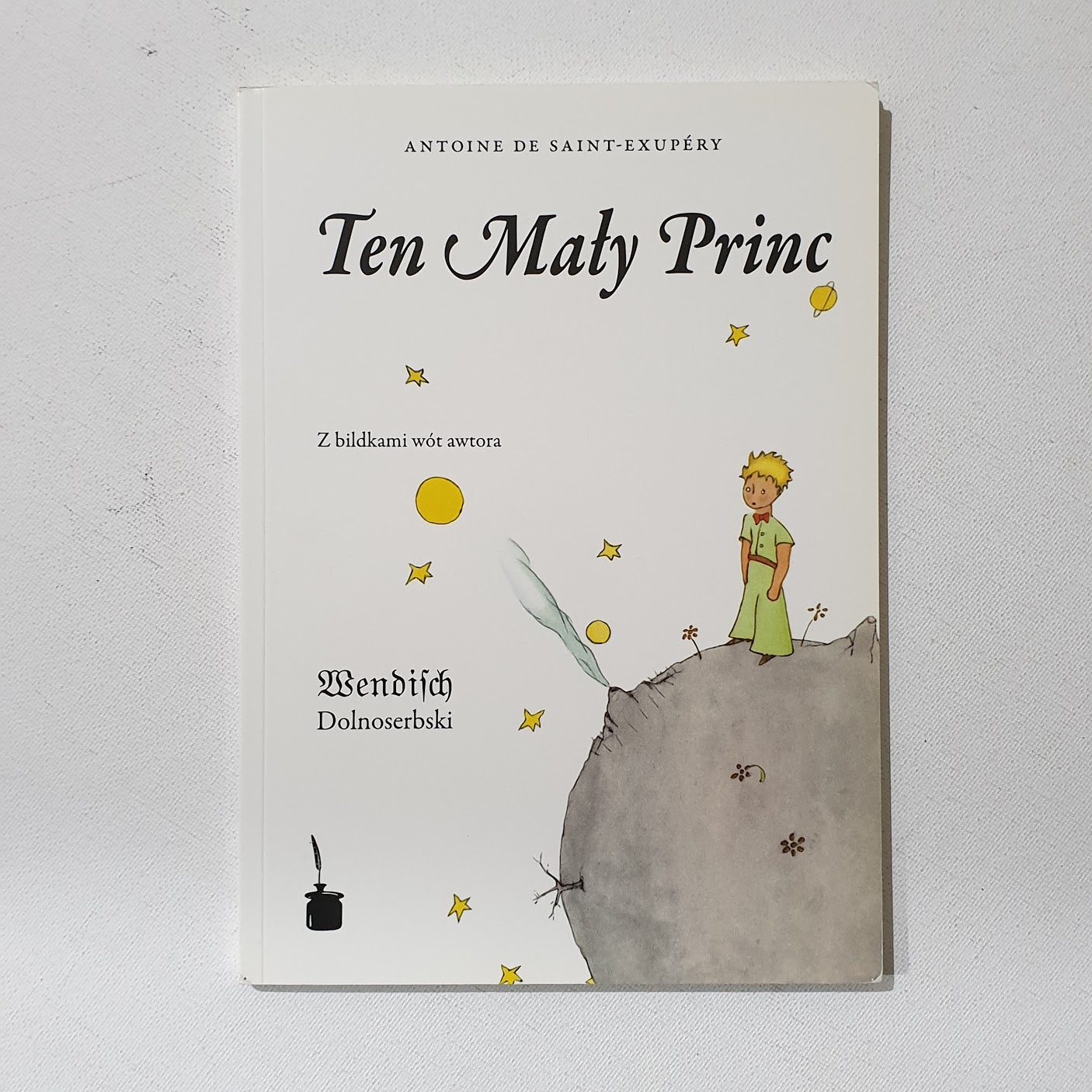
Ten Mały Princ — in Lower Sorbian (dolnoserbšćina).
Lower Sorbian, or Dolnoserbski, is a West Slavic language spoken in the Lower Lusatia region of Brandenburg, Germany. It is one of the two Sorbian languages, alongside Upper Sorbian, and belongs to the Slavic language family, sharing close ties with Czech, Polish, and Upper Sorbian. Lower Sorbian’s linguistic and cultural heritage is an integral part of the identity of the Sorbs, a Slavic minority in eastern Germany.
Lower Sorbian developed from the Slavic dialects of the Sorbian tribes that settled in the Lusatia region around the 6th century. Over the centuries, the language faced significant pressure from Germanisation, leading to a decline in the number of speakers. Despite these challenges, the Sorbian community has endeavored to preserve its language and cultural traditions.
Lower Sorbian shares grammatical and phonological features with other West Slavic languages. It exhibits a rich system of inflection, including cases for nouns, pronouns, and adjectives, as well as verb conjugations. Phonologically, it is characterized by vowel length distinction and a series of consonants that include palatalized sounds.
Like Upper Sorbian, Lower Sorbian uses the Latin alphabet with additional diacritical marks to represent sounds specific to the language.
The number of Lower Sorbian speakers is smaller than that of Upper Sorbian, with estimates often cited as a few thousand fluent speakers. The language is predominantly used within the home and community, with limited presence in media, education, and public life.
Lower Sorbian is considered more endangered than Upper Sorbian due to its fewer speakers and limited use in public domains. Efforts to revitalise the language include bilingual education programs, cultural festivals, and publications in Lower Sorbian. The language’s vitality is also supported by Sorbian institutions and organizations dedicated to promoting Sorbian heritage.


